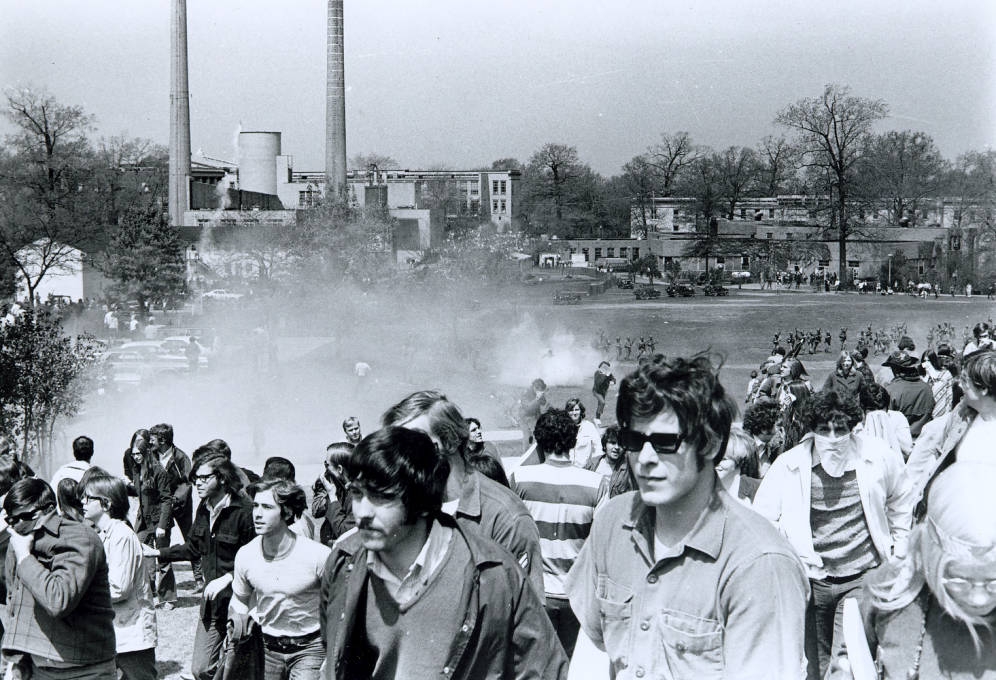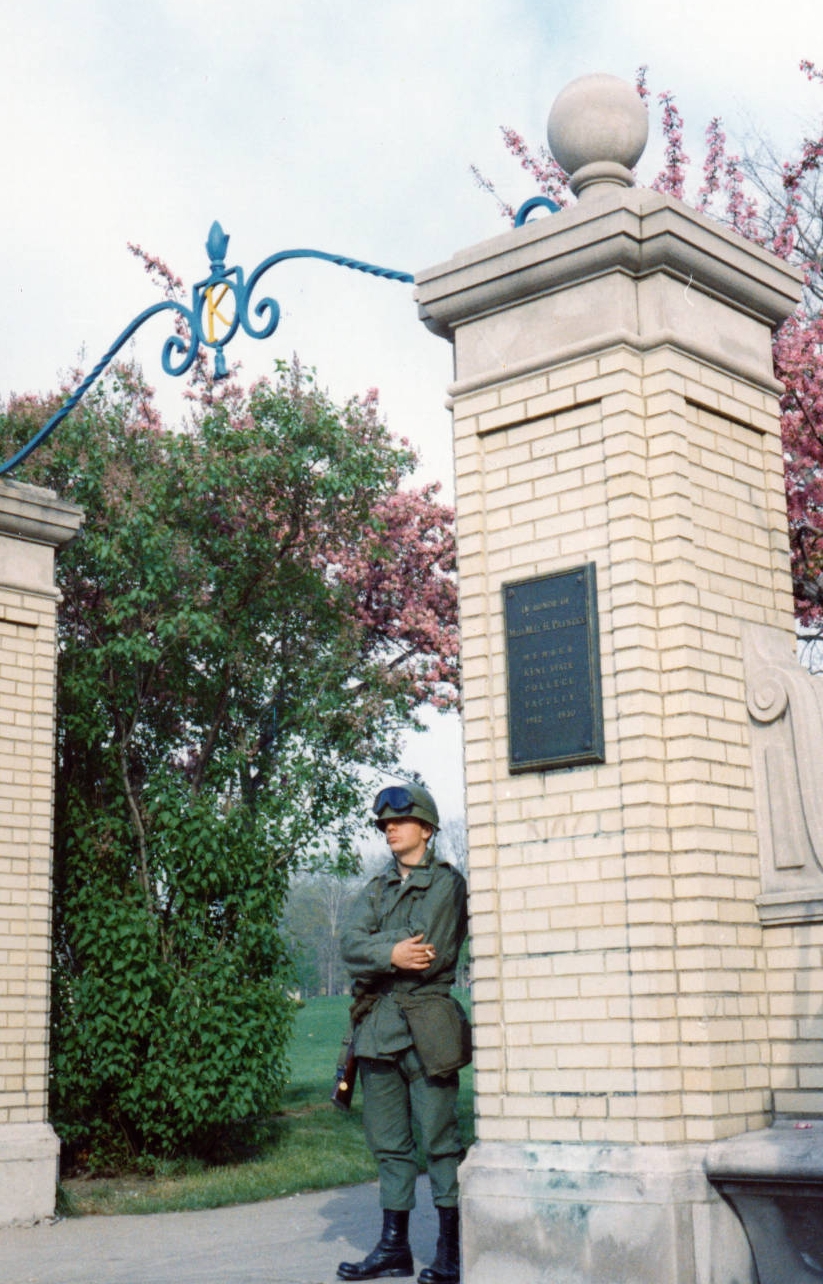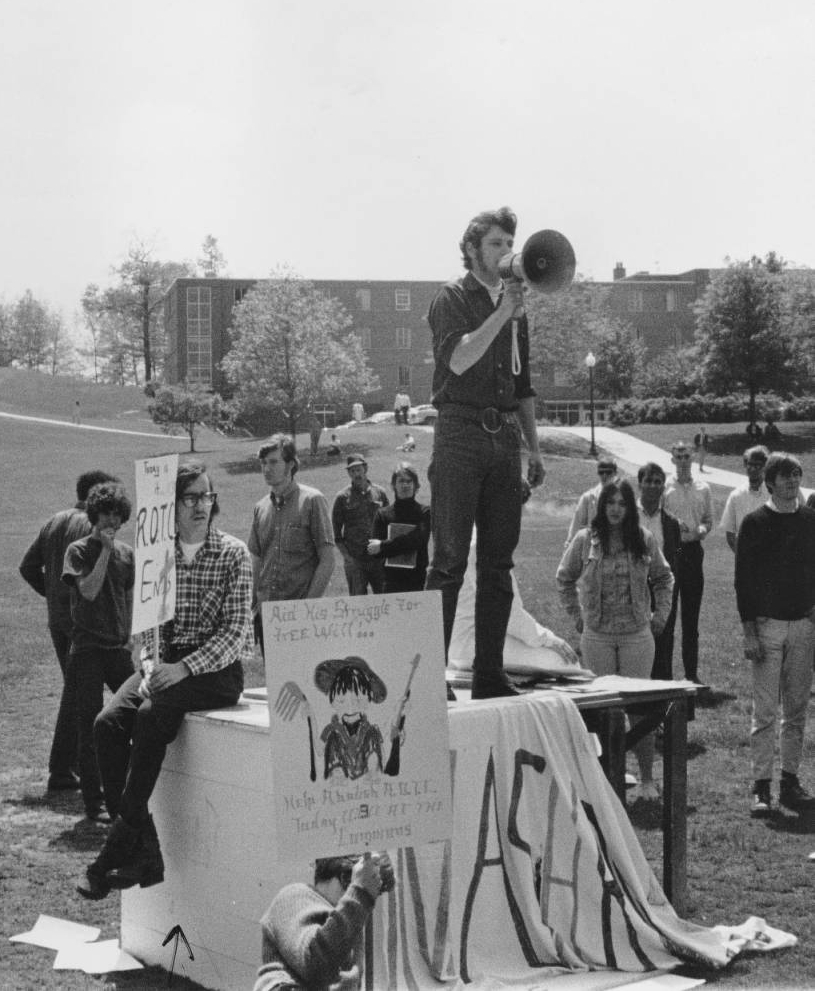Four Dead in Ohio

May 4th is a date that looms large in Ohio history, as well as in the memory of many Americans. Today marks the 42nd anniversary of the shootings at Kent State University, when campus protests against the Vietnam War and tensions between students and the Ohio National Guard erupted into a tragedy that left four college students dead, one paralyzed and eight more injured. This event became synonymous with the anti-war movement that divided Americans of the time, and crystallized the sentiments of a troubled nation.

In the days leading up to the shootings, protests were held in cities and on campuses around the country in response to President Nixon’s April 30th announcement of the so-called Cambodian Incursion, which anti-war activists saw as an aggressive expansion of U.S. efforts in Southeast Asia. Demonstrations at Kent turned ugly with downtown vandalism and the burning of a campus ROTC building, and on May 2nd, Governor Rhodes granted Mayor LeRoy Satrom’s request to send Ohio National Guardsmen to Kent to maintain order.
The situation escalated over the next day and a half, and during a midday campus protest on May 4th, the National Guard arrived to order students and protestors to disperse. When the crowd refused and grew aggressive, Guardsmen advanced, and though the exact sequence of events is still hotly contested, just before 12:30 PM a volley of gunfire erupted. In 13 seconds, 67 shots had been fired that would continue to echo in Ohio’s history for a long time to come.

Ohio Memory has a fascinating collection of material related to this important series of events, both before the shootings and after. Many of the items were submitted to the collection by Kent State University itself, including letters to the editor of the Daily Kent Stater, University President Robert White’s speech addressing the tragedy, and additional photographs from the day’s demonstration. Letters from Richard Nixon and Governor James Rhodes provide more context on the event’s ramifications. Explore the items to learn more about the history of one of Ohio’s most infamous events, and to remember all those whose lives were lost or forever changed that day.
Thanks to Lily Birkhimer, Digital Projects Coordinator at the Ohio History Connection, for this week’s post!



Leave a Reply
You must be logged in to post a comment.